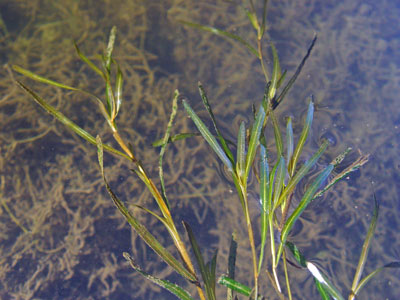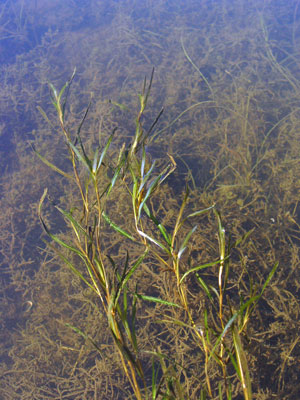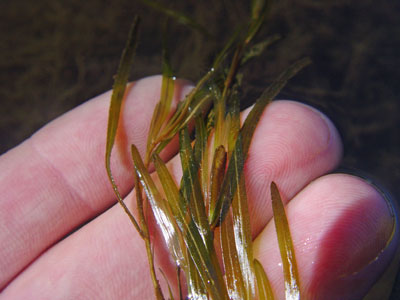DACF Home → Bureaus & Programs → Maine Natural Areas Program → Communities, Plants, and Animals → Rare Plants → Potamogeton friesii

Potamogeton friesii Rupr.
Fries' Pondweed
- State Rank: S1
- Global Rank: G5
- State Status: Endangered
Habitat: Calcareous or brackish waters. [Open water (non-forested, wetland)]
Range: New Brunswick to New York, west to North Dakota and Iowa. Also in Europe. Most abundant in the Great Lakes region. The single eastern Massachusetts population has long been extinct.

Aids to Identification: Identification of species of Potamogeton is notoriously difficult, especially when dealing with those species that have submerged leaves only, like P. friesii. This plant can be distinguished from other pondweeds with thin, membranous leaves by the following characteristics: It has paired, nodal glands; its leaves are linear, bright green and translucent, 1.5-3.5 mm broad, 5-7 nerved, and rounded at the apex (unlike the very similar P. strictifolius); the stipules are coarsely fibrous, often whitish; the winter buds have inner leaves that are perpendicular to the outer leaves.
Ecological characteristics: Ecological relationships in Maine are not well known.
Phenology: Flowers July - August.
Family: Potamogetonaceae
Synonyms: None noted.

Known Distribution in Maine: This rare plant has been documented from a total of 6 town(s) in the following county(ies): Aroostook.
Reason(s) for rarity: Scarcity of habitat.
Conservation considerations: Maintain hydrologic integrity of its alkaline water habitat.